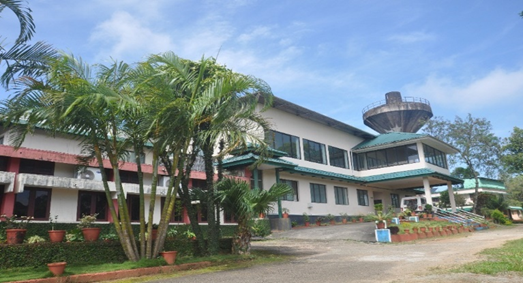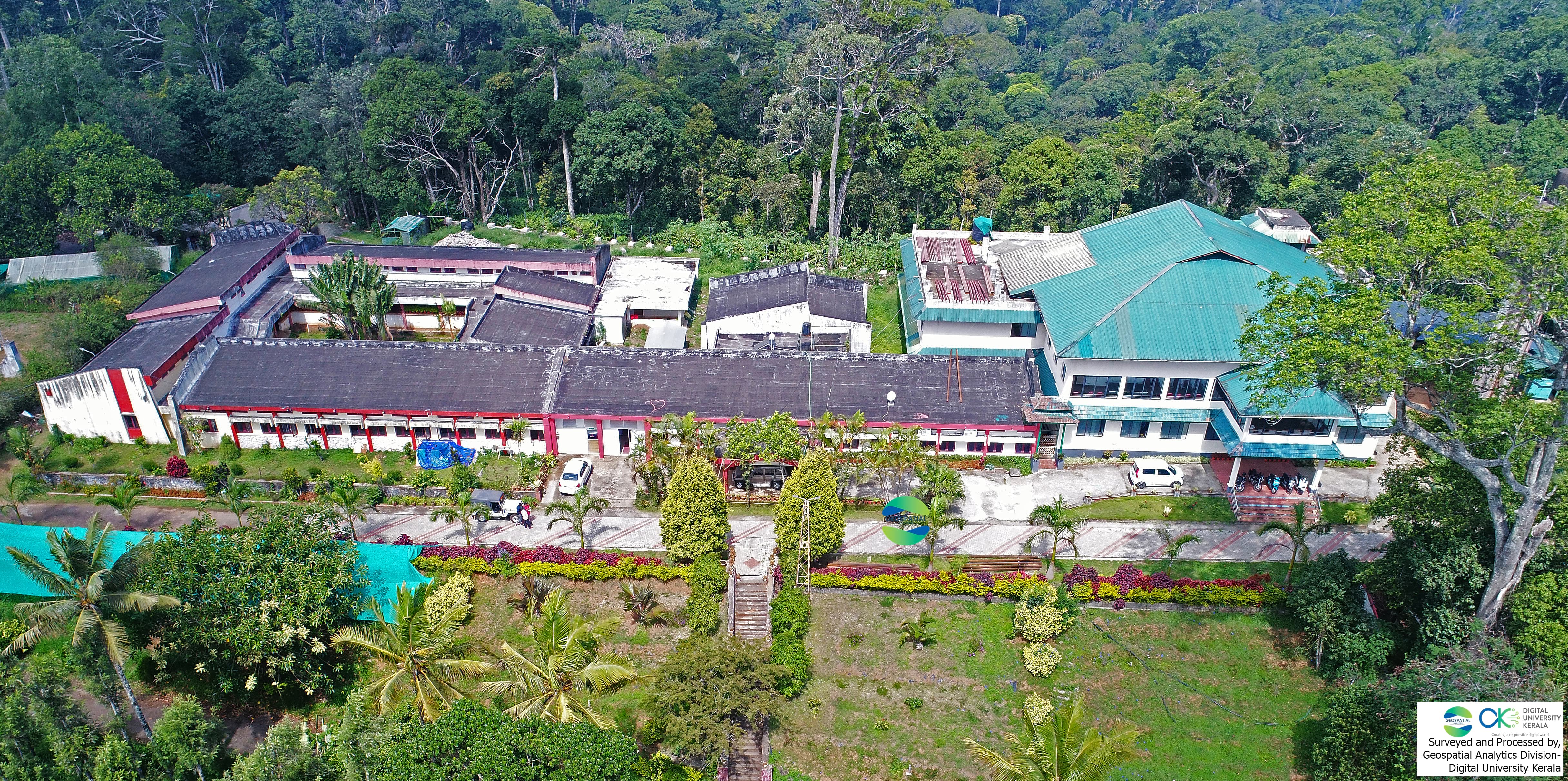Indian Cardamom Research Institute (ICRI), Spices Board undertook a detailed survey of cardamom growing soils in Udumbanchola/ Idukki Taluks with an objective to bring ten villages in these two Taluks under the ambit of soil test-based fertiliser recommendation (First Phase). At present, CardSApp is applicable to cardamom growing areas in ten villages viz., Chathurangapara, Kalkoonthal, Kanthipara, Karunapuram, Kattappana, Pampadumpara, Parathodu, Rajakkadu, Rajakumari and Udumbanchola. In the second phase of the project, CardSApp will cover the other cardamom growing regions of Idukki, Tamil Nadu and Karnataka
One composite sample (0-15 cm) was collected from each 10 ha area. Location coordinates of sites of soil sample were recorded by GPS, between January to May periods in 2021 and 2022. Soil Samples were analysed following standard analytical protocols for soil pH, primary, secondary and micronutrients at Agronomy and Soil Science Division, ICRI, Myladumpara.
GIS based spatial interpolation of soil nutrients was done in collaboration with Rubber Research Institute of India. Geostatistical analyst of ArcGIS software was used for generating soil nutrient maps using Inverse Distance Weighted Algorithm. Spatial interpolation maps were prepared for 12 nutrients like Organic Carbon (OC), Soil pH, available potassium (K), available calcium (Ca), available magnesium (Mg), available boron(B), available copper (Cu), available iron (Fe), available manganese (Mn), available phosphorous (P), available sulphur(S) and available zinc (Zn). Further, village-wise spatial variability of soil nutrient maps was prepared in the Geotiff format with cell size of 30 m.
Web based fertiliser recommendation was developed based on interpolated soil fertility data in collaboration with Digital University, Kerala, overlaying different soil fertility parameters and soil depth following the guidelines of soil test-based fertiliser recommendations by ICRI.


Indian Cardamom Research Institute (ICRI) was established in 1978 as the research wing of Spices Board, with its headquarters at Myladumpara, Idukki District (Kerala) to undertake basic and applied research on small Cardamom. To address location specific requirements, two Regional Research Stations were also set up at Sakleshpur in Hassan District of Karnataka and Thadiankudisai in Dindigul District of Tamil Nadu during 1980.
Cardamom is grown mostly in forest soils in high rainfall Western Ghat regions and are acidic and are rich in NPK status and are deficient in few of the secondary and micronutrients. Soils most favourable for growth and development of cardamom are red lateritic loam with layers of organic debris present in evergreen forests, although it grows on a variety of soils with only a shallow zone of humus accumulation.
Major sources of nutrients are manures and fertilizers.
Manures are decomposed materials that were once part of plants or animals. Application of mature farmyard manure/ Compost @ 5-10Kg per plant may be made during May/June. The manures should be thoroughly mixed with surface soil after application. Organic manures such as neem cake (one kg per plant), bone meal (one kg per plant) or vermicompost (one kg per plant) have beneficial effects on root proliferation and plant growth and also helps to reduce nematode and root grub infestation.
Fertilizers are natural or synthetic in origin which can supply one or more plant nutrients. Fertilizers are broadly classified as follows.
Straight fertilizers - those which supply only one plant nutrient mainly. e.g. Urea, Muriate of potash etc.
Complex fertilizers - contain two or three major plant nutrients of which two are in chemically combined form. e.g. Diammonium phosphate, Ammonium phosphate, 10: 26: 26 NPK complex fertiliser etc.
* Straight fertilizers are cheaper.
N, P and K are applied to cardamom plants in general. Ca, Mg,S, Zn and B can be applied when soil is low in the status of these nutrients. The rate and quantity are decided based on the soil test reports as well as considering the age of the plants.
Common fertilizers used in cardamom plantations are Urea (N- 46%), Rock phosphate or Rajphos (P2O5 - 16-18 %) and Muriate of potash (K2O-60%). Magnesium Sulphate (Mg 9.5 %) , Bentonite sulphur (S 90 %), Zinc sulphate (Zn-21%), Borax (B- 11 %) or Solubor (21%) are the common sources of secondary and micronutrients applied in cardamom plantations
Application of lime/dolomite is essential if pH of the soil is < 5.5. Though the quantity of lime is to be arrived at by assessing the lime requirement of the soil, for practical purposes, application of agricultural lime is recommended @ one kg per plant per year for soils with pH below 5.0 (or 2 Kg dolomite) and half a kg of lime (or 1 Kg dolomite) when pH is between 5-5.5. Lime is to be applied in one or two splits during May and September. Fertilizer shall be applied only after 15-20 days of lime application.
Application of mature farmyard manure/ Compost @ 5-10Kg per plant may be made during May/June. The manures should be thoroughly mixed with surface soil after application. Under irrigated condition, manuring can be done in two splits, one in May and the subsequent application during September. Organic manures such as neem cake (one kg per plant), bone meal (one kg per plant) or vermicompost (one kg per plant) have beneficial effects on root proliferation and plant growth and also helps to reduce nematode and root grub infestation
Soil fertility survey conducted by ICRI showed that sulphur deficiency is widespread in cardamom soils while zinc and boron deficiency is observed in certain areas. Application of zinc to the foliage is found to enhance not only cardamom growth and yield but also the quality of the produce. Hence, it is recommended that zinc may be applied as a foliar spray as zinc sulphate @ 250 grams/100 liters of water during April/May and Sept./Oct. Zinc should be applied alone and not to be mixed with any insecticide/fungicide/ fertilizer since zinc may precipitate and become unavailable to the plants. Soil application of boron in the commercial grade borax at the rate of 7.5 kg/ha is recommended in boron deficient areas. It may be applied in two doses along with NPK fertilizers. Otherwise boron may be applied alone as foliar dose by using borax (at 0.25 %) during April/May and Sept./Oct. Nutrient grade sulphur viz., Bentonite sulphur may be applied at the rate of 20 kg per hectare along with NPK fertilizers in sulphur deficient areas.
After removing the mulches around the plant base, the fertilizers may be applied in a circular band of width 15 cm, leaving 30 cm from the plant base and thoroughly mixed with the top five to seven cm of the surface soil with a hand fork. The fertilizer-applied area may be covered again with mulches.
The spray solution, containing the fertilizer in the prescribed proportions, may be applied to the foliage of the plant covering both sides of the leaves. The plant should have sufficient turgidity at the time of foliar application lest it would wilt. A clear sky or even a cloudy condition may be considered suitable for undertaking foliar application. Avoid very dry/hot periods or noon hours for foliar spraying.